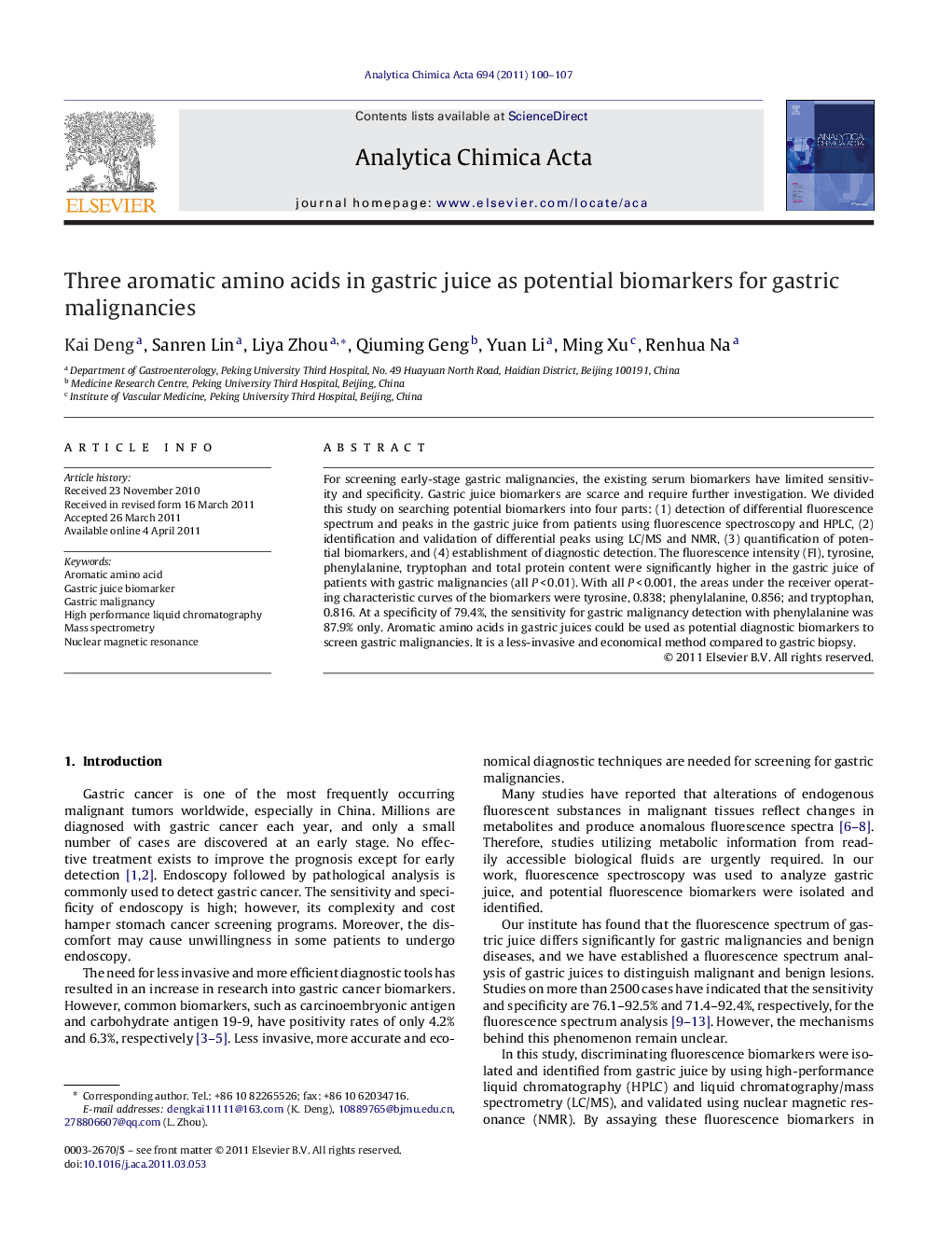| Article ID | Journal | Published Year | Pages | File Type |
|---|---|---|---|---|
| 1166025 | Analytica Chimica Acta | 2011 | 8 Pages |
For screening early-stage gastric malignancies, the existing serum biomarkers have limited sensitivity and specificity. Gastric juice biomarkers are scarce and require further investigation. We divided this study on searching potential biomarkers into four parts: (1) detection of differential fluorescence spectrum and peaks in the gastric juice from patients using fluorescence spectroscopy and HPLC, (2) identification and validation of differential peaks using LC/MS and NMR, (3) quantification of potential biomarkers, and (4) establishment of diagnostic detection. The fluorescence intensity (FI), tyrosine, phenylalanine, tryptophan and total protein content were significantly higher in the gastric juice of patients with gastric malignancies (all P < 0.01). With all P < 0.001, the areas under the receiver operating characteristic curves of the biomarkers were tyrosine, 0.838; phenylalanine, 0.856; and tryptophan, 0.816. At a specificity of 79.4%, the sensitivity for gastric malignancy detection with phenylalanine was 87.9% only. Aromatic amino acids in gastric juices could be used as potential diagnostic biomarkers to screen gastric malignancies. It is a less-invasive and economical method compared to gastric biopsy.
Graphical abstract.Figure optionsDownload full-size imageDownload as PowerPoint slideHighlights► Offering three potential gastric juice biomarkers in screening gastric cancer.
